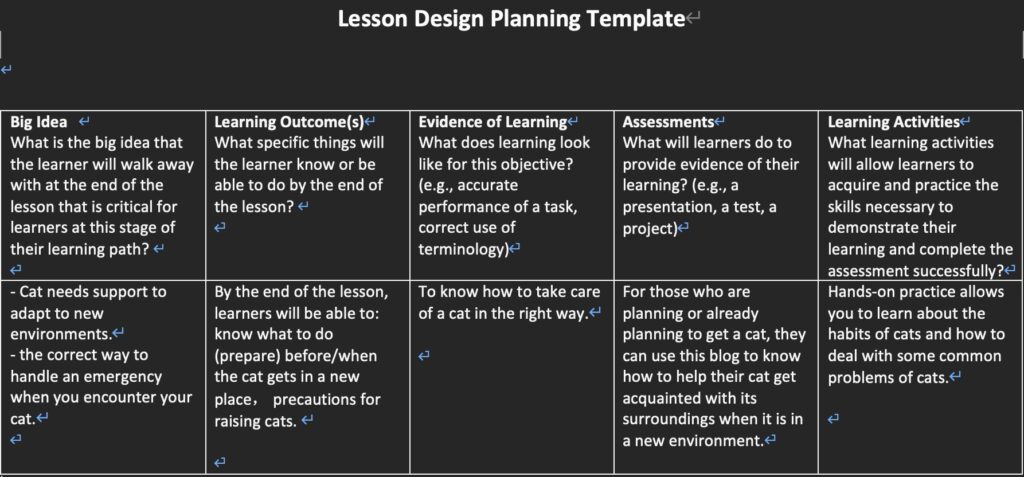
This week we have been studying Constructive Alignment and Backward Design and Merrill’s Five Principles of Instruction. Backward Design is the process of designing a course, unit or lesson, and Constructive Alignment refers to the alignment of our learning outcomes, assessments, and activities. Constructive Alignment is also central to the concept of Backward Design, which begins with determining what the end outcomes will be, then planning and assessment, and finally determining teaching and assignment methods. It focuses on student mastery of knowledge and can enhance the alignment between student learning and student work, thus improving the efficiency of learning.
Merrill’s First Principles of Instruction were founded by M. David Merrill, a noted educational researcher and teacher. This Principles are focused on a problem-solving approach to learning design. He believes that online learners must actively engage with the eLearning content in order to fully grasp the information and apply it in the really world. Merrill’s principles highlight that learning is promoted when:
- Learners are engaged in solving real-world problems
- Existing knowledge is activated as a foundation for new knowledge
- New knowledge is demonstrated to the learner
- New knowledge is applied by the learner
- New knowledge is integrated into the learner’s world.
Here is a draft of my lesson design planning template for “How to raising a cat as a beginner”:
